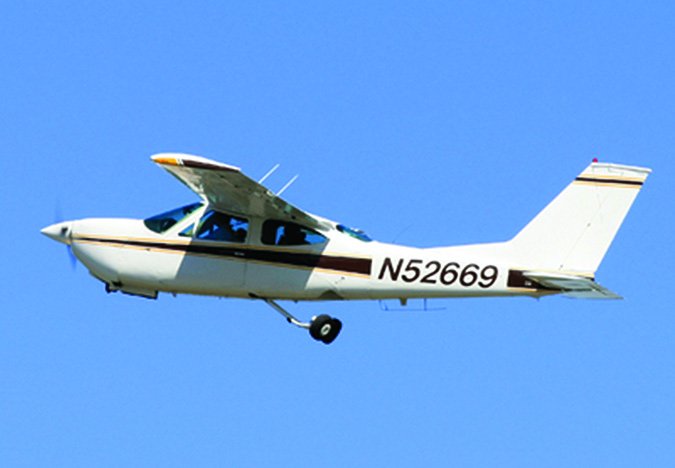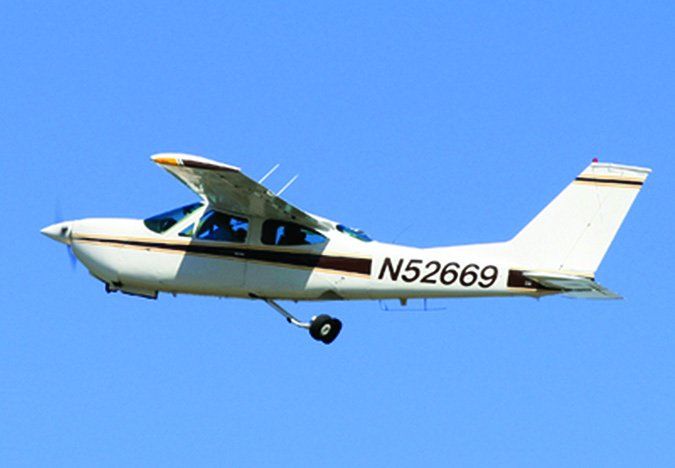One sunny weekend day this spring, I flew some friends on a three-leg trip. The mission was a simple one: to meet up with some other friends at their respective airports. Both of my passengers hold at least a private pilot certificate, as did the friends with whom we were meeting. Two of the three legs were in excess of 150 nm apiece. The optimal routing for the first two legs was north and south in the gap between the Tampa and Orlando Class B airspace. The third and final leg was a short, 20-minute hop back to home base.
I flew the first two legs IFR. At the beginning of the first leg, one of my pilot-rated passengers expressed surprise that I went to the trouble to plan and file IFR, especially because the weather was so good. But by the end of the day, he seemed convinced I made the right decision to file IFR, not because the weather caved but because it simplified dealing with relatively complex airspace and lots of VFR traffic. It made sense to me, but some pilots might think it wasteful or overcomplicated to file IFR for a daytime trip in solid-gold VMC. They’re wrong.

In the System
Back in what some consider general aviation’s heyday, filing and flying IFR in a personal airplane was a luxury not many owner/pilots could afford. Given the surveillance capabilities and avionics of the day, following sometimes-indirect routings along low altitude airways with a VOR was the common navigation method. Few such airplanes had any sort of autopilot or area navigation system, and fatigue-reducing noise-reduction headsets weren’t available. On good-weather days, doing it IFR often meant inconvenient routings or altitudes, and carrying a lot more charts than we can get away with safely today.
So it’s understood some pilots may think flying IFR on good-weather days is frivolous, and would choose to make all three legs of that trip VFR, perhaps with minimal ATC contact. It’s completely understandable, and it’s also remarkable we still have the freedom and ability to basically come and go under VFR as we please.
There was a time I would have preferred to do it VFR, also, probably with flight following. I get it. But there are two additional pieces of information you need before criticizing my decision to file IFR on this trip and deciding whether I was reasonable to do so.
One thing you need to know to fully evaluate my choice is that there are several MOAs and restricted areas along the route of flight. That’s in addition to the two Bravos. The image at top right depicts the military’s special use airspace (SUA) over central Florida, and the route I planned to avoid it all. The other image zooms in on all that SUA, and the traffic choke point created by its proximity to Orlando’s Class B.
The other thing you need to know is there are numerous ATC facilities—including Class D towers and local Tracons, like Daytona Beach—on Florida’s east coast. On good-weather weekends, those facilities are hammered from all the VFR training and transient traffic. If you want ATC services going into an area like that, as I generally do, getting into the system early and ensuring everyone is on the same page can be difficult if you’re a pop-up VFR flight. Controllers simply don’t have time for routine VFR services—you’ll often hear the phrase “remain outside the Class B/C/D”—and otherwise simple things like flight following may be delayed or terminated when traffic is heavy. With all that going on, filing and flying those two legs IFR, even on a good-weather day, made the most sense to me.
Making it Less Painful
Meanwhile, Florida’s geography and airspace make IFR operations in personal airplanes both more and less complicated than in many other areas of the U.S. Fact is, each area of the country has its own challenges to consider. In Utah or Colorado, for example, minimum en route altitudes may be unattainable in a piston single on a hot day. In many other areas, you may be forced onto a lengthy or complicated departure procedure, perhaps taking you in a direction opposite from your destination.
For example, if the weather’s CAVU at, say, Santa Maria, Calif. (KSMX), like it was for me that day in Florida, you’ll still get the Buelt Two departure procedure (DP) as part of your clearance before takeoff. If you’re on the other side of the U.S. at, say, Asheville, N.C. (KAVL), you’ll likely get the Asheville Five DP. Both are designed to keep you out of the rocks and weeds when departing in IMC from the respective airports.
But if you’re flying on a good-weather day and can accept responsibility for terrain clearance on departure, you can request a VFR climb, probably to the ATC facility’s minimum vectoring altitude for the sector you’re in. On reaching that altitude after a VFR climb, you’ll hear the magic words “radar contact” and likely be able to motor off to your destination—or at least to a fix in that general direction—without further ado.
The good weather also means other shortcuts are available to you. A visual approach at the destination is one of them, to be sure, but there’s also the ability to pick up your clearance while airborne. Launching VFR and then picking up an IFR clearance is a time-honored practice, of course, but it’s especially useful on a good-weather day. Depending on traffic and geography, obtaining an airborne clearance can get you on your way sooner. It also can overly complicate things if, for example, the frequency is too busy to get in a word. Ideally, as with bad-weather days, getting the clearance sooner rather than later would be our preference.
Many IFR pilots might look at a severe-clear day and consider obtaining a VFR on top clearance. You can do that, but it really won’t buy you anything. In our hypothetical about going IFR somewhere when the weather’s great, about the only thing such a clearance will do is put you at a VFR altitude—whatever the regular IFR altitude would be, plus 500 feet.
While a VFR on top clearance can be useful on many days—when there’s a cloud deck with good VFR below it and above it, for instance—today’s CAVU isn’t necessarily one of them. Such a clearance just isn’t a useful tool on most good-weather days.
The Benefits
Meanwhile, doing such a trip IFR offers a lot of benefits. As mentioned, you’ll automagically get routed around any active SUA, for example, and you’ll definitely be busy looking for traffic. The good news is ATC will call all that traffic for you, and you’ll be called out to participating aircraft. You’ll likely need to do some knob-twisting to keep up with frequency changes, but controllers in the sectors you’re entering will be expecting you. And if there’s a need to graze Class B airspace or you’re going into a Class C airport, being IFR will make it all seamless.
Another benefit is the additional experience you’ll get by being IFR on a good-weather day. Not only will you be able to perfect your radio technique, but by simply listening to the controllers and other pilots, you’ll gain a much better understanding of what ATC’s expectations are and how to meet them. You’ll gain valuable insights on how to work the IFR system. By listening to controllers and other pilots, especially those VFR flights attempting to obtain scarce ATC services, you also may learn lots about how not to request them. It all can be very entertaining, but you really should treat it as an experience-building process.
If you’re one of the types who files IFR for everything—even taxiing to the self-serve pumps—you already know the value of being in the system on good-weather days. Yes, you can experience delays or be routed around a MOA you might otherwise simply fly through VFR. But if you’re serious about your instrument flying—or maybe just got the rating and are struggling to stay current—filing and flying IFR on good-weather days is an excellent choice. And if your passengers are rated and current pilots, put on the Foggles and log the flight as simulated instrument time.
Jeb Burnside is this magazine’s Editor-In-Chief. He’s a 3100-hour instrument-rated ASEL/ASES/AMEL commercial pilot and aircraft owner.




